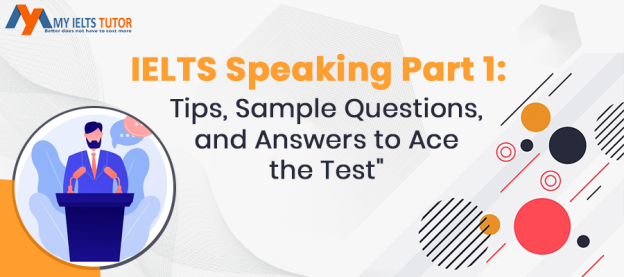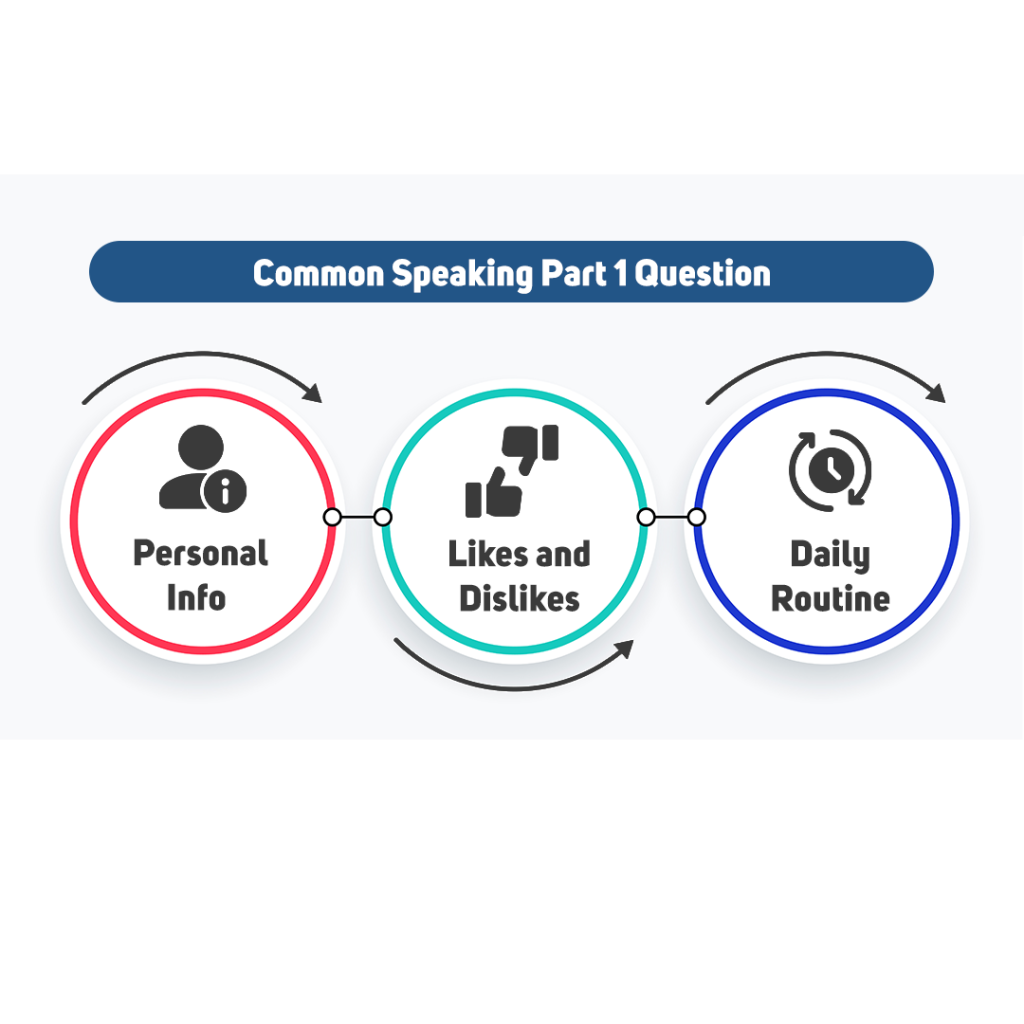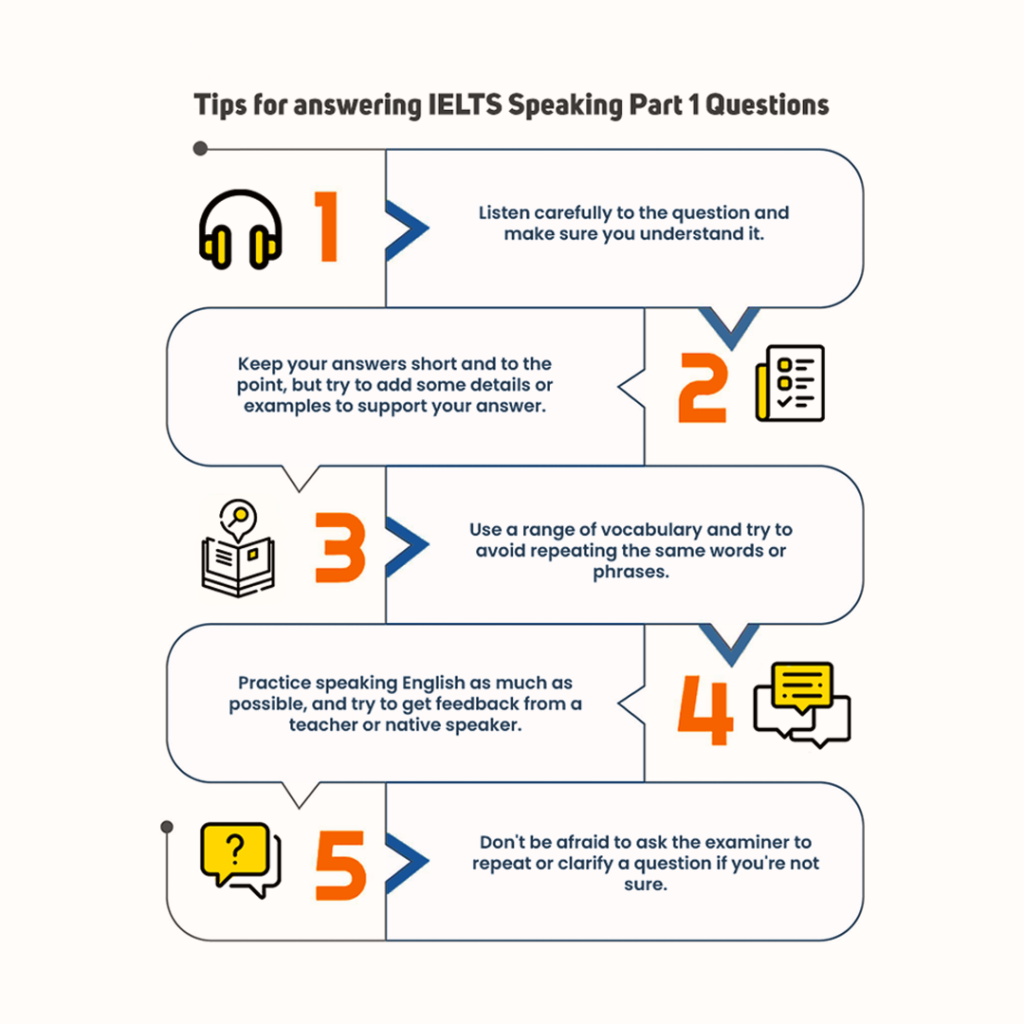Your cart is currently empty!
Author: My IELTS Tutor
Complete List of Eligible Occupations for the Canada Spousal Open Work Permit (SOWP)

Are you looking to reunite with your spouse in Canada while continuing your professional career? The Canada Spousal Open Work Permit (SOWP) offers an incredible opportunity for eligible spouses to work in Canada, allowing families to live and thrive together.
In this blog, we will provide a detailed breakdown of the eligible occupations for the Spousal Open Work Permit under the new eligibility criteria set by Immigration, Refugees, and Citizenship Canada (IRCC). Whether you’re planning to apply or assisting someone, this comprehensive guide will help you navigate the process effectively.
What is the Canada Spousal Open Work Permit (SOWP)?
The Spousal Open Work Permit (SOWP) is a special program that allows the spouse or common-law partner of a skilled foreign worker or international student in Canada to work anywhere in the country without needing a job offer or a Labour Market Impact Assessment (LMIA).
This program is designed to support families by enabling both partners to contribute financially while living together in Canada. With recent updates from IRCC, the eligibility criteria now focus on specific TEER (Training, Education, Experience, and Responsibilities) categories under the National Occupational Classification (NOC) system.
As of January 21, 2025, Immigration, Refugees, and Citizenship Canada (IRCC) introduced updated eligibility criteria for the Spousal Open Work Permit (SOWP), enhancing opportunities for spouses of foreign workers to join the Canadian workforce. This change aims to address labor shortages in high-demand sectors while supporting family reunification and financial stability.
Under the new criteria, spouses of foreign workers can qualify for an open work permit if the principal foreign worker meets the following requirements:
1. Eligible Occupations of the Principal Foreign Worker
The eligibility is now linked to the type of work performed by the principal foreign worker. Specifically, the foreign worker must be employed in one of the following occupation categories, as defined under the Training, Education, Experience, and Responsibilities (TEER) framework in Canada’s National Occupational Classification (NOC) system:
TEER 0 Occupations: Management Roles
Management roles typically involve decision-making authority, strategic oversight, and leadership within organizations. These roles often require significant experience and advanced qualifications. Examples of eligible TEER 0 occupations include:
- Chief Executive Officers (CEOs)
- Marketing Managers
- Financial Managers
- Engineering Managers
- Sales Managers
TEER 1 Occupations: Roles Requiring a University Degree
TEER 1 includes professions that generally require a university degree (bachelor’s, master’s, or professional degrees). These jobs are highly skilled and critical to various industries in Canada. Examples include:
- Software Engineers
- Physicians
- Accountants
- Civil Engineers
- Lawyers
Specific TEER 2 and TEER 3 Occupations: Skilled Trades and Technical Roles
TEER 2 and TEER 3 occupations encompass skilled trades and technical roles essential to sectors like construction, manufacturing, healthcare, and more. However, not all TEER 2 and TEER 3 roles qualify under the SOWP criteria. IRCC has outlined specific eligible occupations, including:
TEER 2 Occupations
- Industrial Electricians
- Power Engineers and Power Systems Operators
- Aircraft Mechanics
- Construction Estimators
TEER 3 Occupations
- Automotive Service Technicians
- Heavy Equipment Operators
- Plumbers
- Licensed Practical Nurses (LPNs)
- Medical Laboratory Technicians
By focusing on these eligible TEER categories, IRCC aims to align the SOWP program with labor market priorities, ensuring that spouses of foreign workers contribute to high-demand fields across the country.
2. Work Permit Validity Requirement
In addition to the occupational eligibility, the principal foreign worker must have at least 16 months of validity remaining on their work permit at the time of the SOWP application.
This condition is critical because it ensures that the spouse’s work permit aligns with the remaining duration of the principal worker’s employment in Canada. A longer validity period helps families maintain stability and provides sufficient time for both partners to integrate into the workforce and contribute to Canada’s economy.
What This Means for Applicants
The updated eligibility criteria ensure that the SOWP program is targeted toward spouses of foreign workers who are actively contributing to Canada’s economy in meaningful and in-demand roles. Spouses granted an open work permit under these rules are free to work for any employer in Canada, without requiring a specific job offer or a Labour Market Impact Assessment (LMIA).
These changes underscore IRCC’s commitment to:
- Strengthening family unity.
- Supporting Canada’s economic growth.
- Attracting skilled professionals to address labor shortages in critical sectors.
Eligible TEER 2 and TEER 3 Occupations for Spousal Open Work Permits
Below is the list of TEER 2 and TEER 3 occupations under the National Occupational Classification (NOC) system that qualify for the Spousal Open Work Permit:
Here’s a comprehensive list of occupations grouped by their respective NOC categories. This can be used for your blog post to provide clear and organized information:
NOC Group 22 – Technical Occupations Related to Natural and Applied Sciences
- Aircraft Instrument, Electrical and Avionics Mechanics, Technicians, and Inspectors – NOC 22313
- Industrial Instrument Technicians and Mechanics – NOC 22312
- Electronic Service Technicians (Household and Business Equipment) – NOC 22311
- Electrical and Electronics Engineering Technologists and Technicians – NOC 22310
- Construction Estimators – NOC 22303
- Industrial Engineering and Manufacturing Technologists and Technicians – NOC 22302
- Mechanical Engineering Technologists and Technicians – NOC 22301
- Civil Engineering Technologists and Technicians – NOC 22300
- Construction Inspectors – NOC 22233
- Occupational Health and Safety Specialists – NOC 22232
- Engineering Inspectors and Regulatory Officers – NOC 22231
- Non-Destructive Testers and Inspectors – NOC 22230
- Information Systems Testing Technicians – NOC 22222
- User Support Technicians – NOC 22221
- Computer Network and Web Technicians – NOC 22220
- Technical Occupations in Geomatics and Meteorology – NOC 22214
- Land Survey Technologists and Technicians – NOC 22213
- Drafting Technologists and Technicians – NOC 22212
- Industrial Designers – NOC 22211
- Architectural Technologists and Technicians – NOC 22210
- Landscape and Horticulture Technicians and Specialists – NOC 22114
- Conservation and Fishery Officers – NOC 22113
- Forestry Technologists and Technicians – NOC 22112
- Agricultural and Fish Products Inspectors – NOC 22111
- Biological Technologists and Technicians – NOC 22110
- Geological and Mineral Technologists and Technicians – NOC 22101
- Chemical Technologists and Technicians – NOC 22100
NOC Group 32 – Technical Occupations in Health
- Opticians – NOC 32100
- Licensed Practical Nurses – NOC 32101
- Paramedical Occupations – NOC 32102
- Respiratory Therapists, Clinical Perfusionists, and Cardiopulmonary Technologists – NOC 32103
- Animal Health Technologists and Veterinary Technicians – NOC 32104
- Other Technical Occupations in Therapy and Assessment – NOC 32109
- Denturists – NOC 32110
- Dental Hygienists and Dental Therapists – NOC 32111
- Dental Technologists and Technicians – NOC 32112
- Medical Laboratory Technologists – NOC 32120
- Medical Radiation Technologists – NOC 32121
- Medical Sonographers – NOC 32122
- Cardiology Technologists and Electrophysiological Diagnostic Technologists – NOC 32123
- Pharmacy Technicians – NOC 32124
- Other Medical Technologists and Technicians – NOC 32129
- Traditional Chinese Medicine Practitioners and Acupuncturists – NOC 32200
- Massage Therapists – NOC 32201
- Other Practitioners of Natural Healing – NOC 32209
NOC Group 33 – Assisting Occupations in Support of Health Services
- Dental Assistants and Dental Laboratory Assistants – NOC 33100
- Medical Laboratory Assistants and Related Technical Occupations – NOC 33101
- Nurse Aides, Orderlies, and Patient Service Associates – NOC 33102
- Pharmacy Technical Assistants and Pharmacy Assistants – NOC 33103
- Other Assisting Occupations in Support of Health Services – NOC 33109
NOC Group 42 – Front-Line Public Protection Services and Paraprofessional Occupations in Legal, Social, and Community Education Services
- Specialized Members of the Canadian Armed Forces – NOC 42102
- Early Childhood Educators and Assistants – NOC 42202
NOC Group 43 – Assisting Occupations in Education and Legal, Public Protection
- Elementary and Secondary School Teacher Assistants – NOC 43100
- Operations Members of the Canadian Armed Forces – NOC 43204
NOC Group 53 – Occupations in Art, Culture, and Sport
- Athletes – NOC 53200
- Coaches – NOC 53201
NOC Group 72 – Technical Trades and Transportation Officers and Controllers
- Contractors and Supervisors, Machining, Metal Forming, Shaping and Erecting Trades – NOC 72010
- Contractors and Supervisors, Electrical Trades and Telecommunications Occupations – NOC 72011
- Contractors and Supervisors, Pipefitting Trades – NOC 72012
- Contractors and Supervisors, Carpentry Trades – NOC 72013
- Contractors and Supervisors, Other Construction Trades, Installers, Repairers and Servicers – NOC 72014
- Contractors and Supervisors, Mechanic Trades – NOC 72020
- Contractors and Supervisors, Heavy Equipment Operator Crews – NOC 72021
- Supervisors, Printing and Related Occupations – NOC 72022
- Supervisors, Railway Transport Operations – NOC 72023
- Supervisors, Motor Transport and Other Ground Transit Operators – NOC 72024
- Supervisors, Mail and Message Distribution Occupations – NOC 72025
NOC Group 73 – General Trades
- Concrete Finishers – NOC 73100
- Tilesetters – NOC 73101
- Plasterers, Drywall Installers and Finishers, and Lathers – NOC 73102
- Roofers and Shinglers – NOC 73110
- Glaziers – NOC 73111
- Painters and Decorators (Except Interior Decorators) – NOC 73112
- Floor Covering Installers – NOC 73113
- Residential and Commercial Installers and Servicers – NOC 73200
NOC Group 82: Supervisory Roles in Natural Resources
- Supervisors, Logging and Forestry – NOC Code 82010
- Supervisors, Mining and Quarrying – NOC Code 82020
- Contractors and Supervisors, Oil and Gas Drilling and Services – NOC Code 82021
- Agricultural Service Contractors and Farm Supervisors – NOC Code 82030
- Contractors and Supervisors, Landscaping, Grounds Maintenance, and Horticulture Services – NOC Code 82031
NOC Group 83: Occupations in Natural Resources and Related Production
- Underground Production and Development Miners – NOC Code 83100
- Oil and Gas Well Drillers, Servicers, Testers, and Related Workers – NOC Code 83101
- Logging Machinery Operators – NOC Code 83110
- Fishing Masters and Officers – NOC Code 83120
- Fishermen/Women – NOC Code 83121
Conclusion
The Canada Spousal Open Work Permit is a gateway to family unity and professional growth. With a clear understanding of the eligible occupations and the application process, you can take advantage of this incredible program.
If you or your spouse are planning to apply for the Spousal Open Work Permit, ensure you meet the eligibility requirements and gather all necessary documentation to avoid delays.
Canada welcomes families to grow and thrive together—don’t miss this opportunity!
PGWP’s Update and list of Eligible Programs
IRCC announces eligible programs for PGWPs
Published: October 17, 2024

The Post-Graduation Work Permit (PGWP) program has undergone key updates as announced by IRCC (Immigration, Refugees, and Citizenship Canada) in September 2024. These changes impact international graduates applying for a PGWP after November 1, 2024, particularly regarding their field of study and language requirements. However, university graduates with bachelor’s, master’s, or PhD degrees will not be subject to these new field-specific criteria.
Eligible Fields of Study for PGWP
The updated PGWP eligibility guidelines align with Canada’s national labor market needs, mirroring the categories introduced in the Express Entry system in 2023. These categories are based on occupations in high-demand sectors. Eligible fields include:
- Agriculture and agri-food
- Healthcare
- Science, Technology, Engineering, and Mathematics (STEM)
- Trade
- Transport
Programs that meet these criteria are categorized under the Classification of Instructional Programs (CIP), which is similar to the National Occupation Classification (NOC) system used for jobs in Canada.
Sample PGWP-Eligible Programs by CIP Code
Here are some examples of PGWP-eligible programs and their CIP codes for each field of study:
Field of Study Program Title CIP 2021 Code Agriculture and Agri-food Agricultural business and management, general 01.0101 Agriculture and Agri-food Animal/livestock husbandry and production 01.0302 Healthcare Special education and teaching, general 13.1001 Healthcare Physical therapy assistant 51.0806 STEM Computer programming/programmer, general 11.0201 STEM Chemical engineering 14.0701 Trade Electrician 46.0302 Trade Heating, air conditioning, ventilation and refrigeration maintenance technology/technician 47.0201 Transport Air traffic controller 49.0105 Transport Truck and bus driver/commercial vehicle operator and instructor 49.0205 This is not an exhaustive list of eligible programs. To explore all options, prospective applicants can consult IRCC’s official webpage.
How to Find Your CIP Code
To determine if your program is eligible for a PGWP based on your field of study, follow these steps:
- Visit Statistics Canada’s 2021 CIP page.
- Use the search bar to enter keywords related to your instructional program or navigate through the available field links.
- Click on the relevant sub-category and review the definitions for specific programs.
- Once in the correct category, you can view specific instructional programs, their CIP codes, and descriptions.
New Language Requirements for PGWP Applicants
In addition to the updated field of study criteria, IRCC has introduced new language requirements for PGWP applicants. The required Canadian Language Benchmark (CLB) or Niveaux de compétence linguistique canadiens (NCLC) levels vary based on the level of study.
Here’s a breakdown of the new language criteria:
Level of Study Language Requirement Field of Study Requirement University bachelor’s, master’s, or doctoral degree CLB 7 in English or NCLC 7 in French All fields of study are eligible Any other university program CLB 7 in English or NCLC 7 in French Must graduate in an eligible field of study College or other programs CLB 5 in English or NCLC 5 in French Must graduate in an eligible field of study Note: Graduates applying for a PGWP before November 1, 2024, are exempt from the new field of study requirements but must meet the language requirements.
Conclusion: Understanding the New PGWP Rules
As of November 1, 2024, international graduates seeking a Post-Graduation Work Permit will need to meet specific field of study and language criteria. Graduates from eligible programs in agriculture, healthcare, STEM, trade, and transport are positioned to benefit from this updated policy, which reflects Canada’s evolving labor market needs.
If you’re planning to apply for a PGWP, ensure your program aligns with the CIP codes in the eligible fields and that you meet the language proficiency requirements to secure your work permit in Canada.
Discover more about your study options and PGWP eligibility by visiting the official IRCC website.
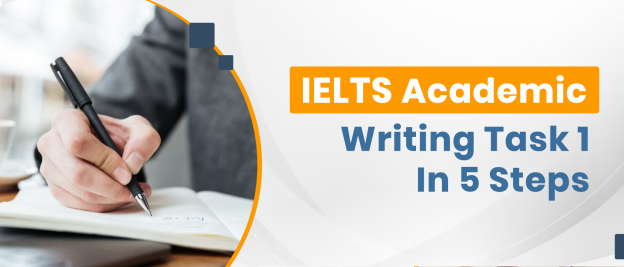
IELTS Academic Writing Task 1 In 5 Steps
Writing Task 1
You must write 150 words for Academic Writing Task 1 of the IELTS about a process, a map, or data presented in the form of a bar chart, line graph, pie chart, or table. Many students struggle with this skill because they haven’t practised it before. Understanding how your essay will be graded and using that knowledge to write an essay that gives the examiner exactly what they want will help you perform well on IELTS Writing Task 1.
Follow these five simple steps, and you’ll be on your way to success!
- Understand the marking criteria
- Paraphrase the question
- Write an overview
- Support overview with detail
- Check your work
The task is made significantly simpler by breaking it up into smaller components. I’ll go over each of the five steps in greater detail below, followed by some sample responses so you can see how it actually works in the real world.
Please keep in mind that I will provide you with the opportunity to edit my work at the conclusion, so please do not be overly critical in the comments section if you find any errors. Intentional errors are made to highlight the importance of double-checking your work and giving people time to consider the solution.
The following Task 1 Question will be used to guide us:
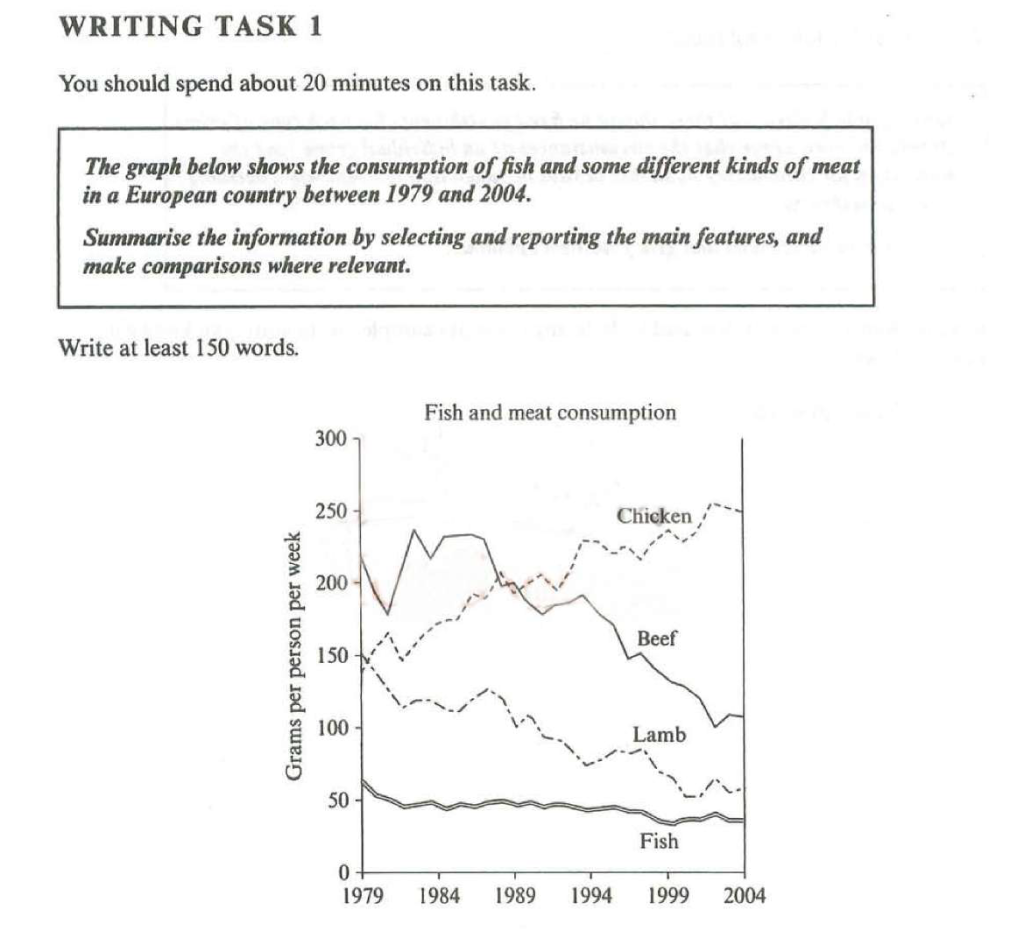
Marking Criterion
Task Achievement 25% Coherence and Cohesion 25% Lexical Resource 25% Grammatical Range and accuracy 25% If you’re confused by any of these expressions, don’t worry; I’ll go over each one in more detail below and provide a clearer explanation of what it means. The official marking guidelines are available.
Task Achievement
Your capacity to respond to the question accurately is referred to as task achievement. To accomplish this, you must complete all of the tasks outlined in the question and then write an answer that is both concise and comprehensive.
You’ll achieve a higher grade if you:
- Select the main/key features of the graph, chart, map or process.
- Write a clear overview that includes the main/key features (main trends, differences, stages etc.) of the graph, chart, map or process.
- Support them with accurate detail.
- Write at least 150 words.
Coherence and Cohesion
The ability to connect your ideas in a logical and understandable manner is referred to as coherence. Most of this is done at the paragraph level. Do you have a logical flow to your paragraphs? Is there one main idea that stands out in each paragraph? Is it simple to understand each paragraph’s main idea?
A higher coherence rating will be awarded if you:
- Introduce your topic by paraphrasing the question in the first paragraph.
- Separate your ideas into paragraphs.
- Making it clear which paragraph is your overview.
- Having very clear ideas in your overview.
- Supporting the main points in your overview in separate paragraphs.
- Making it clear what each paragraph is about.
The connection of ideas at the sentence and paragraph levels is referred to as cohesion. Are your ideas and sentences cohesive?
Cohesion will be given a higher grade if you:
Utilise a variety of linking words when necessary.
Use precise linking language.
Avoid overusing conjunctions.Lexical Resource
Your ability to use vocabulary appropriately and accurately is referred to as a lexical resource.
You’ll score better on the vocabulary test if you:
– Correctly answer the question.
– Use synonyms to change up your vocabulary.
– Avoid making lexical errors.
– correct your word spelling.
– To describe trends, comparisons, stages, changes, etc., use the appropriate vocabulary.Grammatical Range and Accuracy
This refers to your capacity to use a variety of grammatical structures and write sentences free of errors.
You’ll achieve a higher grade if you:
Don’t make mistakes.
Use a variety of suitable tenses.
Use a variety of suitable structures.
Use both straightforward and intricate sentences.
Apply the proper punctuation.Paraphrase The Question
We can give the examiners exactly what they want and avoid common mistakes that prevent people from receiving a high score now that we are aware of how the exam is scored.
In Task 1, we should always begin with a paraphrase of the question, This would be the paragraph 1 of the task which is also called ‘opening or an Introduction‘. When we rewrite a phrase or sentence using different words while maintaining the same meaning, we are said to be paraphrasing. We can accomplish this in a number of ways, but using synonyms is the most straightforward.
For Example

Lets paraphrase this question
Paraphrased – The given Line graph depicts the information about fish and varied type of meat eaten in a European nation between 1979 and 2004.
Synonyms we can use
Graph – line Chart
Shows – depicts/illustrates
consumption – Intake/ consumed/eaten
some different kind of – variety of/ varied type of
European Country – In Europe
So, by using a few straightforward synonyms, we were able to paraphrase the sentence and demonstrate to the examiner that we are proficient in this skill and possess a broad vocabulary, earning us two points towards a high score.
Your first paragraph should be this, and we should skip a line to signal to the examiner that we are beginning a new paragraph, the overview.
Overview
The overview is the most crucial paragraph in the entire essay, and writing a poor one will prevent you from receiving a high grade.
Academic Task 1 always asks the same question. It reads:
Summarise the information by selecting and reporting the main features, and make comparisons where relevant.
Examine the visual data and note the most important and obvious patterns, comparisons, or trends. Search for significant variations, the highest and lowest values, any outliers, and any intriguing or noteworthy data.
While examining look for
- a Striking factor of the graph
- a prominent trend
- Highest/ lowest data
- overall how graph is performing (its increasing, decreasing or is it unchanged)
Limiting their interests to just three or four things is a problem that many students experience. There is a tonne of information out there, and it can all seem pertinent.
Consider ways to make IELTS exam questions that are complicated simpler. To make this task simpler, consider how you would respond if someone asked you to describe the graph in just three words: what would they be? Thinking in this way forces you to stop examining all the information and concentrates your attention on identifying the key ideas.
In line graphs, it’s important to pay attention to what typically transpires between the start date and the end date.
Take another look at our example and identify the “main features.”

I have to say 3 general things about this
- Chicken and lamb consumption are contradicting
- People tend to consume more chicken and less of other meats
- Consumption of lamb and beef dropped significantly
- Consumption of fish slightly dropped and remained almost static
I’m done now. There’s no need to make it too complicated. Simply identify the three or four most obvious things.
We are now prepared to add our overview paragraph’s three key features. Typically, an overview paragraph will consist of two sentences that briefly describe the main points. Never use data from the overview to support the main features. Use only dates; don’t include any other numbers.
Our summary sentence will be as follows:
Overall, the most noticeable trend is the contradiction in the consumption of chicken with lamb and meat. Where Europeans preference for chicken increased over time, meat and lamb including fish witnessed a drop.
Support Overview with Detail
Supporting overview simply means writing a body paragraph that carries sufficient details about the graph. You must include the accurate data and present information is logical manner so as to make it clear for the reader to comprehend the graph.
Let’s check how we can add details and support the overview paragraph.
Note – It is not important to add each and every information you can skip some data and information that seems to be unimportant.
Let Have a look
-I would take chicken and lamb as their intake was same in 1979 this seems a great feature to introduce in the beginning and then i can easily compare and contrast them
– Consumption of chicken post 1979 continue to increase sharply while lamb recorded an decline in its consumption by 2004 250 gram per person per week chicken was eaten while around 50 gram per person per week lamb was consumed.
-Now we can talk about beef consumption in the beginning and how it was by the end .
– Finally about fish which had minimum consumption of approx 60 gram per person per week, that marginally dropped at remained at almost 50 gram till 2004.
Lets write it into a paragraph
“On analysis, Consumption of chicken and land in 1979 was almost equal with 150 gram per person per week. Post 1979, Europeans preference for chicken continue to increase and reached at 250 gram per person per week which was maximum. On the other hand, lamb witnessed a sharp drop and by 2004 the intake touched the bottom at 50 gram per per week. Likewise, more than 250 gram per person per week of beef was consumed in 1979, that declined with minor fluctuation and became equal to chicken in 1989 that was 200 gram per person per week. This also declined to 100 gram per person per week in 2004. About fish; its consumption was minimum as compared to three other meats with approximately 60 gram per person per week that slightly dropped i n the following year and almost remained stable till 2004. “
Check your work
We should now have some time to review our work for errors and determine whether there are any areas where we can improve. This is a crucial stage, so try to leave at least 3 to 4 minutes at the end to review and make any necessary improvements.
When we review our work, we ought to:
Review your grammar and punctuation.
Verify the verb tenses. Do they have the right tense?
Verify the veracity of the data used.
test your vocabulary. Can we eliminate any repetition with synonyms?
Verify your paragraphing.
Check the word count. Over 150?
You should use pencil to write your response so that you can quickly edit it.View the essay draft posted above. Which adjustments would you make?
IELTS Academic Writing Task 1 Sample answer

The given Line graph depicts the information about fish and varied type of meat eaten in a European nation between 1979 and 2004.
Overall, the most noticeable trend is the contradiction in the consumption of chicken with lamb and meat. Where Europeans preference for chicken increased over time, meat and lamb including fish witnessed a drop.
On analysis, Consumption of chicken and land in 1979 was almost equal with 150 gram per person per week. Post 1979, Europeans preference for chicken continue to increase and reached at 250 gram per person per week which was maximum. On the other hand, lamb witnessed a sharp drop and by 2004 the intake touched the bottom at 50 gram per per week. Likewise, more than 250 gram per person per week of beef was consumed in 1979, that declined with minor fluctuation and became equal to chicken in 1989 that was 200 gram per person per week. This also declined to 100 gram per person per week in 2004.
About fish; its consumption was minimum as compared to three other meats with approximately 60 gram per person per week that slightly dropped i n the following year and almost remained stable till 2004.
Now check the following things-
1- Whether the opening is clear
2- Paraphrasing is clearly and accurately done
3- Are paragraphs well structured and connected ?
4- Is information well connected?
5 – All the data is accurately and precisely presented.
6 – is comparison done where ever required?
7 – are the details added sufficiently
Conclusion
By adhering to these five easy steps, you can master the IELTS Academic Writing Task 1. You will succeed if you comprehend the assignment, plan your essay well, write a compelling introduction, give an informative overview, and back up your analysis with precise information and language. Remember to put your writing skills into regular practise and ask for feedback. You can excel in the IELTS Academic Writing Task 1 and get the score you want with commitment and consistent effort. Good fortune!
-
Product on sale
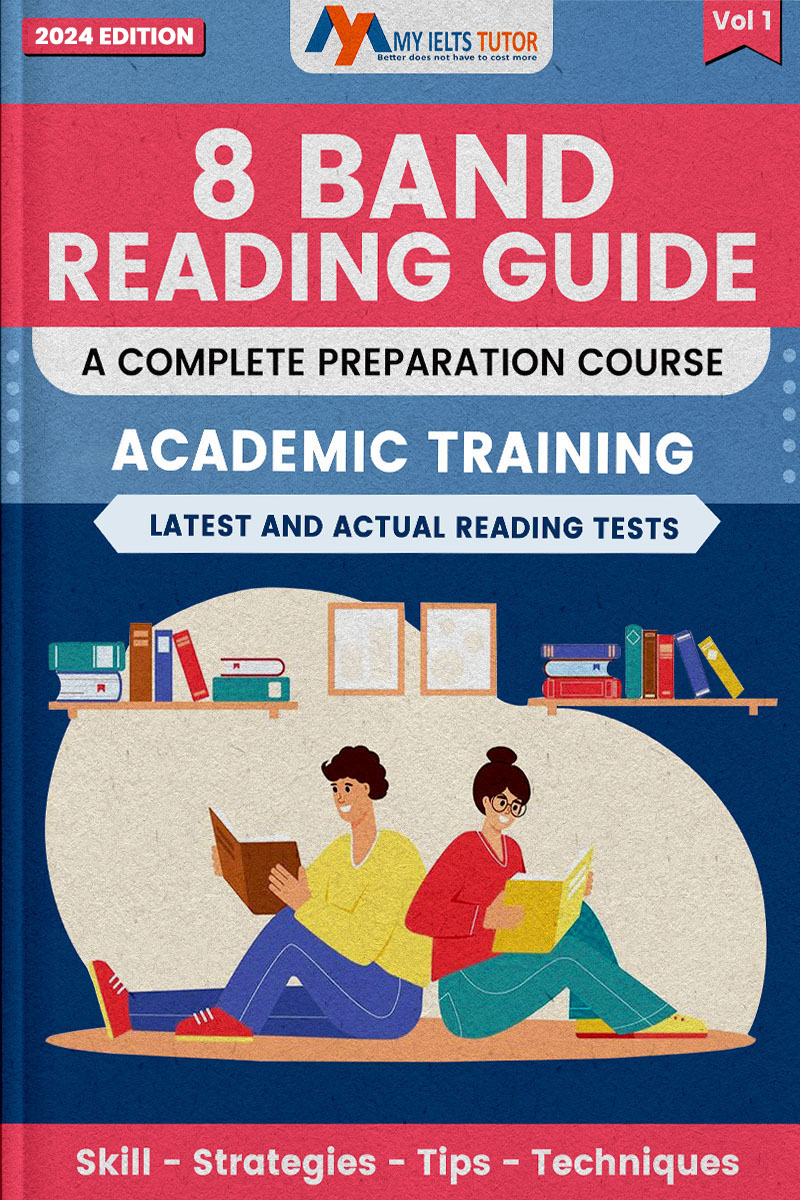 IELTS Academic Reading E-book – A Book With Actual Reading Tests- 2024 EditionOriginal price was: $69.00.$35.00Current price is: $35.00.
IELTS Academic Reading E-book – A Book With Actual Reading Tests- 2024 EditionOriginal price was: $69.00.$35.00Current price is: $35.00. -
Product on sale
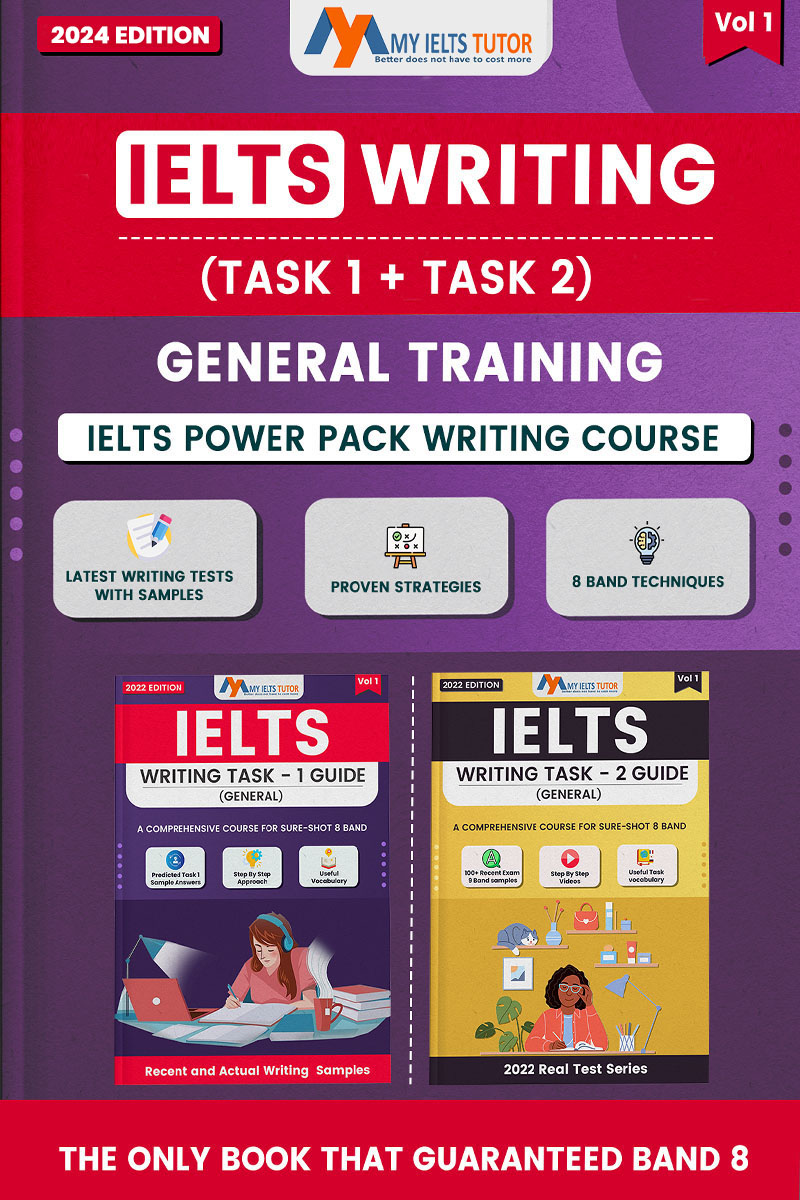 IELTS Writing (General Training) -A complete 8 band writing guide (2025 Edition )Original price was: $59.00.$29.00Current price is: $29.00.
IELTS Writing (General Training) -A complete 8 band writing guide (2025 Edition )Original price was: $59.00.$29.00Current price is: $29.00. -
Product on sale
 IELTS Preparation- General Training Combo (Comprehensive Course for 8777)Original price was: $99.00.$49.00Current price is: $49.00.
IELTS Preparation- General Training Combo (Comprehensive Course for 8777)Original price was: $99.00.$49.00Current price is: $49.00. -
Product on sale
 IELTS General Reading E-book – Complete Reading Success-2025 EditionOriginal price was: $69.00.$35.00Current price is: $35.00.
IELTS General Reading E-book – Complete Reading Success-2025 EditionOriginal price was: $69.00.$35.00Current price is: $35.00. -
Product on sale
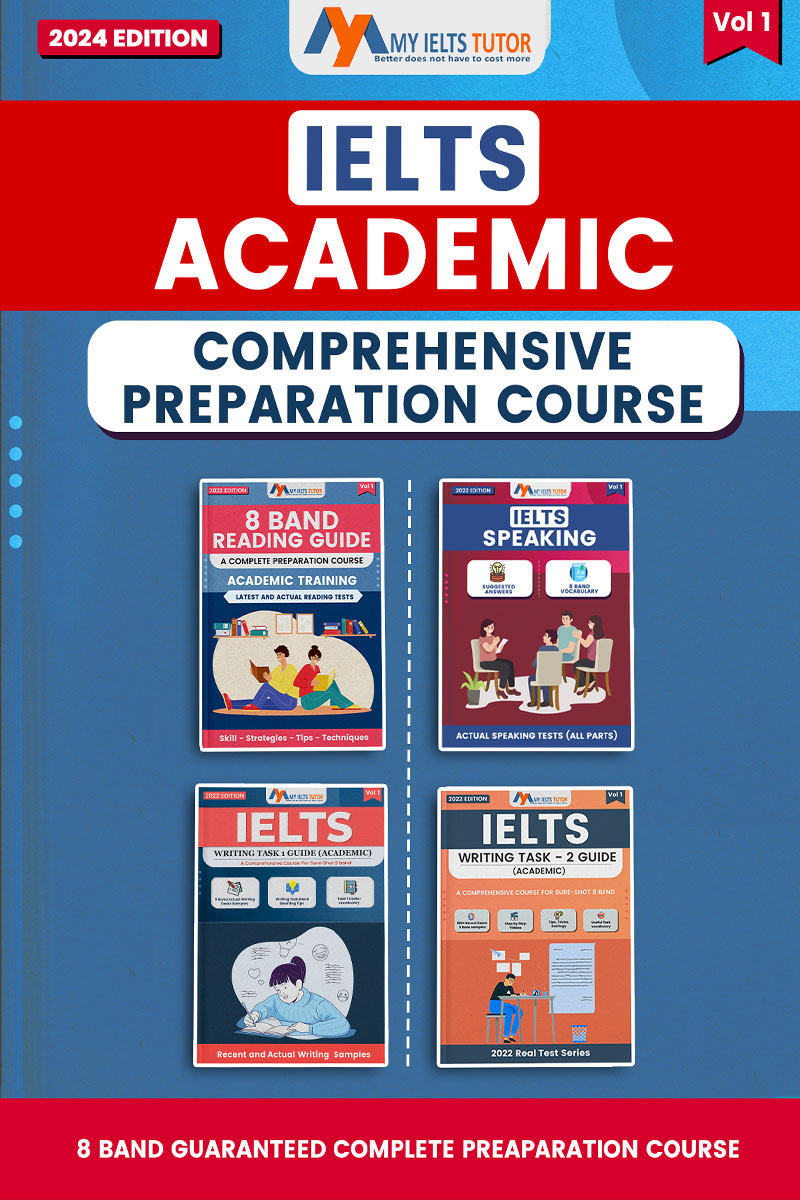 IELTS Material (Academic) – A Comprehensive 8 Band Material (All Modules In one)Original price was: $99.00.$49.00Current price is: $49.00.
IELTS Material (Academic) – A Comprehensive 8 Band Material (All Modules In one)Original price was: $99.00.$49.00Current price is: $49.00. -
Product on sale
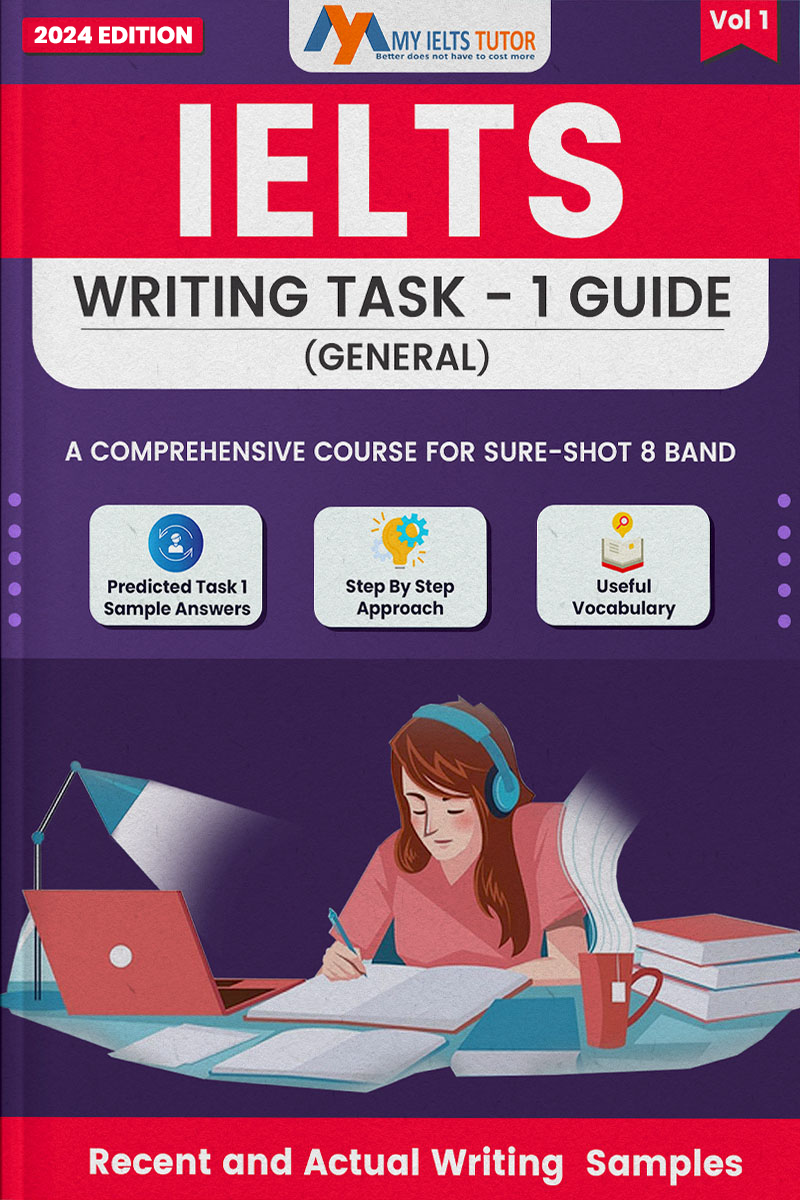 IELTS Writing Task 1 (General Training) 8 band writing guide (2024 Edition) Actual IELTS Practice questionsOriginal price was: $59.00.$29.00Current price is: $29.00.
IELTS Writing Task 1 (General Training) 8 band writing guide (2024 Edition) Actual IELTS Practice questionsOriginal price was: $59.00.$29.00Current price is: $29.00. -
Product on sale
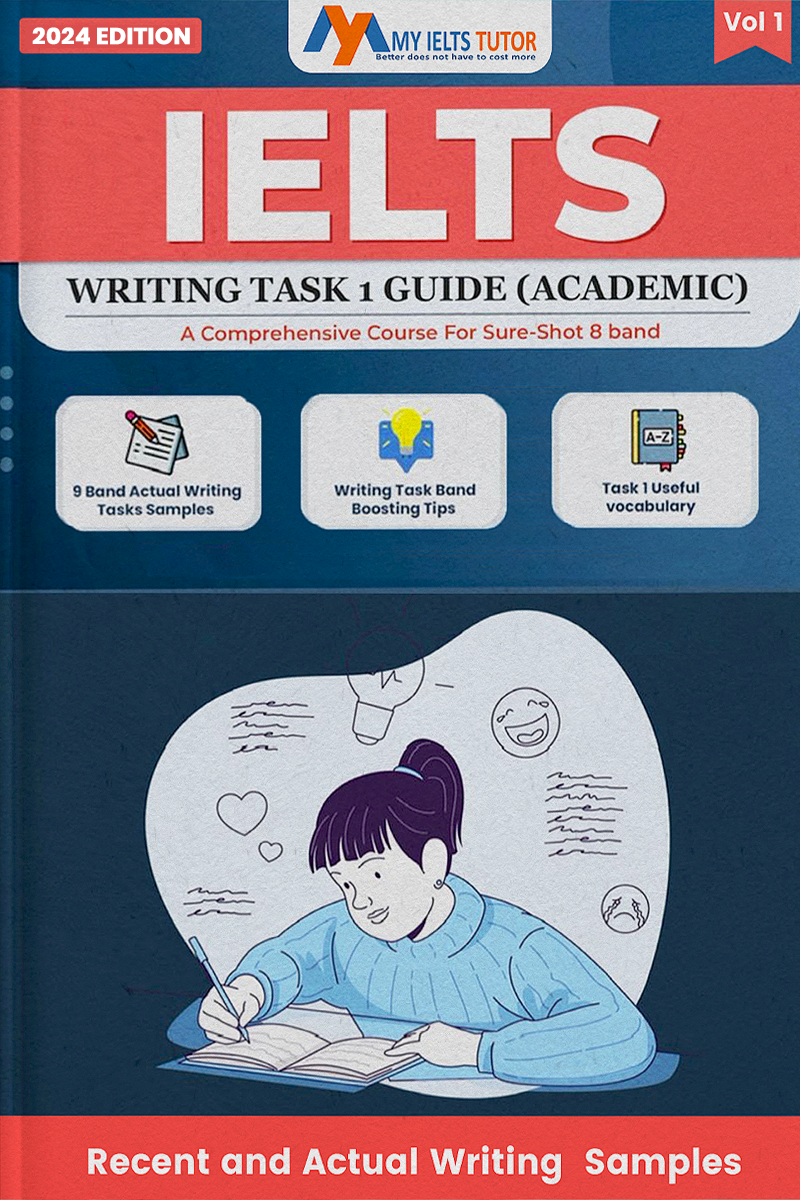 IELTS Writing Task 1 (Academic)- A Complete 8 band book with strategies (2025 Topics)Original price was: $69.00.$35.00Current price is: $35.00.
IELTS Writing Task 1 (Academic)- A Complete 8 band book with strategies (2025 Topics)Original price was: $69.00.$35.00Current price is: $35.00. -
Product on sale
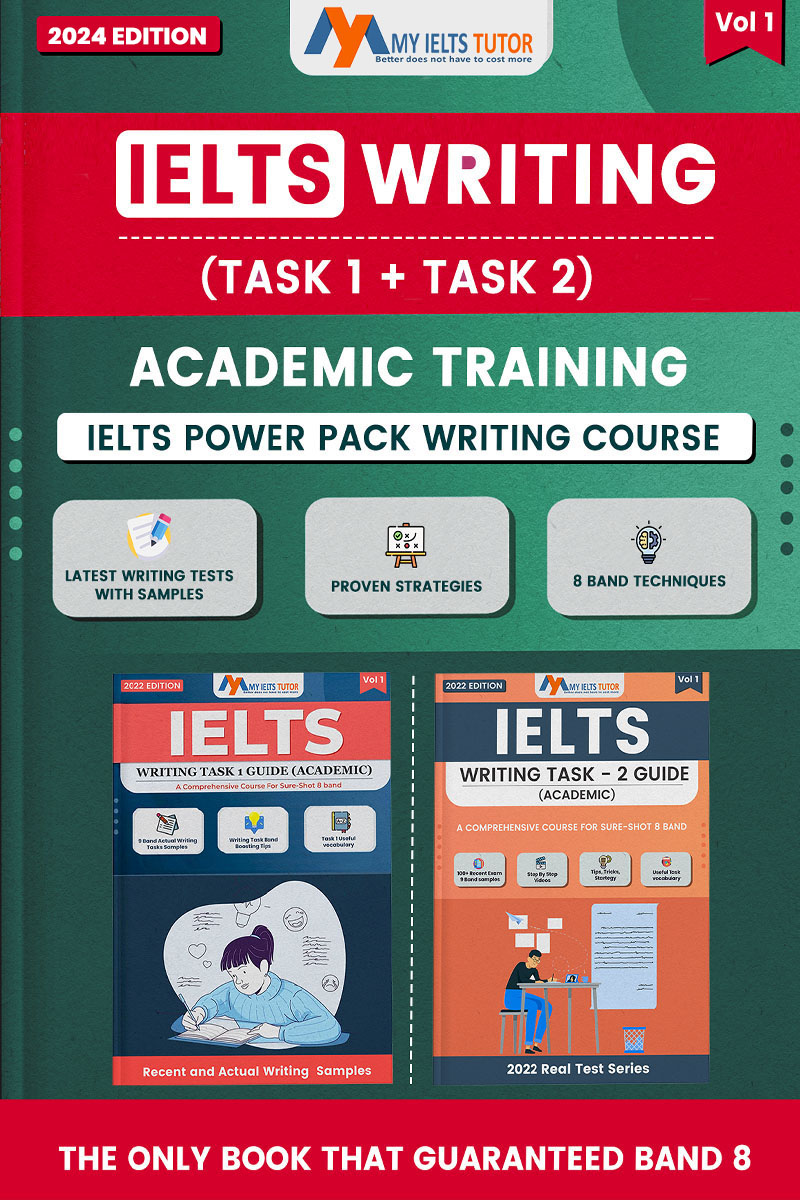 IELTS writing (Academic) -A complete 8 band writing guide (2025 Edition )Original price was: $59.00.$29.00Current price is: $29.00.
IELTS writing (Academic) -A complete 8 band writing guide (2025 Edition )Original price was: $59.00.$29.00Current price is: $29.00. -
Product on sale
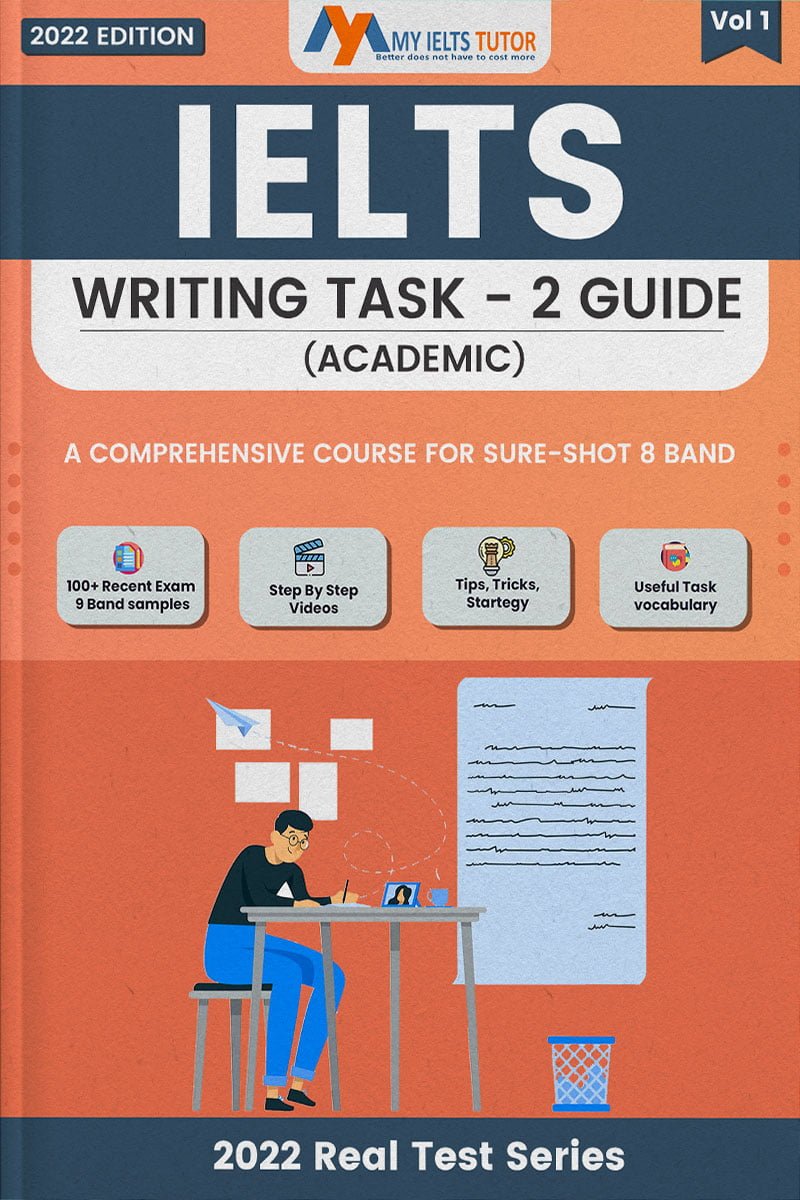 IELTS Writing task 2(Academic)- The ultimate 8 band Guide (2025 Edition ) Actual IELTS Practice questionsOriginal price was: $59.00.$29.00Current price is: $29.00.
IELTS Writing task 2(Academic)- The ultimate 8 band Guide (2025 Edition ) Actual IELTS Practice questionsOriginal price was: $59.00.$29.00Current price is: $29.00.
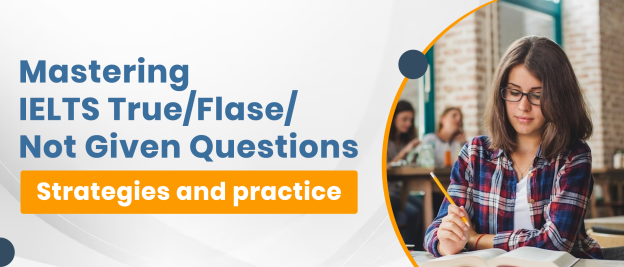
Mastering IELTS True/Flase/Not Given Questions – Strategies and practice
Introduction
The International English Language Testing System (IELTS) is a well-known test that judges how well non-native English speakers can communicate in English. The True, False, Not Given (TFNG) question type is one difficult question style that frequently presents a significant barrier for test-takers. In this blog post, we’ll discuss how to answer TFNG questions effectively and give you a sample passage and the solutions so you can practise.
Understanding True/False/Not Given
The purpose of IELTS TFNG questions is to evaluate how well you can accurately understand the specifics and implied information in a given passage. Here is what each choice means:
- True: The information in the statement matches the information in the passage.
- False: The information in the statement contradicts the information in the passage.
- Not Given: The information in the statement is not discussed or mentioned in the passage.
Strategies To Mastering True False Not Given Question
Skim the passage: To get a general understanding of the subject and the main ideas put forth, start by quickly skimming the passage. You can become more familiar with the situation by reading this introduction.
Read the Question: Read the TFNG question carefully, making sure to underline any words or phrases that call attention to a particular piece of information. Keep an eye out for negation words like “not” or “never,” as they can alter the statement’s meaning. Also check for qualifying words like ‘some’ ‘any’, ‘many’, ‘little’ etc
Mark Keywords– While reading the question it is very important to mark the keywords of the question, so as to locate them in the paragraph. You must take care while marking words as those words that add an important meaning to a question must be taken care of. Even the minor details like article ‘a’ ‘an’ and ‘the’ can sometime change the meaning. Always mark those words that carry important meaning.
Scan Keywords of the question: It’s the time when you need to look for particular word in the paragraph. These are the words from the questions. Reread the passage with the query in mind, looking for details that specifically respond to the statement. Look for alternative words or phrases that could be used in place of the question’s keywords.
Comprehend and understand the location: One you identify the loaction it is crucial to understand the information of the paragraph and relate it with the statement. Mark the statement as “True” if it accurately reflects the information. Mark the claim as “False” if there is convincing evidence to the contrary. Be careful not to confuse contradictory information with information that is merely withheld, though.
Check the “Not Given” options: Mark something as such if it doesn’t match any of the information in the passage. Do not assume the solution based on your prior knowledge or logical inferences.
Major reason why we get confused between False and not given.
In the IELTS Reading Test, common questions include true, false, not given. You will be asked to identify information in a text, then reading statements and deciding if they are true, false or not given. Using Tips tricks and strategies can not only help you to solve it faster but also accurately.
Assumptions-
Students often assume the information. In IELTS We need to go by the writers viewpoint. Look for evidence, when you start assuming it means you need to recheck the statement.
For Example – The amount of foreign language users has increased in recent years.
TRUE- If in paragraph they are referring to the increase in foreign language speaker it will be true
FALSE– If contradiction is there (decline in users of other languages) then it is clearly False
Not Given – If statement states that ‘there are many foreign language users’ We cannot assume that it increased or decreased. It is something undefined in the paragraph. So answer would be not given.
Practice Passage with Answers:
Passage
The Amazon rainforest, known for its incredible biodiversity, is home to numerous plant and animal species. It is often referred to as the “lungs of the Earth” due to its ability to produce a significant amount of oxygen through photosynthesis. However, the rainforest is currently facing severe threats due to deforestation. The loss of trees not only reduces oxygen production but also contributes to climate change by releasing large amounts of carbon dioxide into the atmosphere.
Do the following statement agrees with the information given in the text
Statement 1: The Amazon rainforest is the most biodiverse ecosystem on Earth. Answer: True
Statement 2: The Amazon rainforest is responsible for all oxygen production on Earth. Answer: False
Statement 3: Deforestation in the Amazon rainforest does not contribute to climate change. Answer: False
Statement 4: The Amazon rainforest is mainly composed of coniferous trees. Answer: Not Given
Conclusion
The IELTS exam’s True, False, Not Given questions call for a combination of attentive reading, critical thinking, and comprehension of the passage. You can increase your accuracy in responding to these difficult questions by skimming the passage, picking out important details, and assessing statements in light of the offered options. Don’t forget to regularly practise using model passages to improve your comprehension abilities and succeed on the IELTS exam. Good fortune!
The diverse population of Singapore makes it a culturally rich place to live. It is welcoming for people with various cultural experiences to study or work without feeling out of place. Apart from this, the quality of education and the career opportunities available make Singapore an ideal destination for young students. With modern infrastructure and student-friendly cost of education, Singapore is rapidly becoming an educational hub for students who want to travel outside of India to study.
Adding to that is the global acceptance of the degree, and the chance of securing placement is also higher. Since Singapore is one of the popular business hubs in South-East Asia, you will find many large corporations have their presence here and recruit candidates from local universities.
-
Product on sale
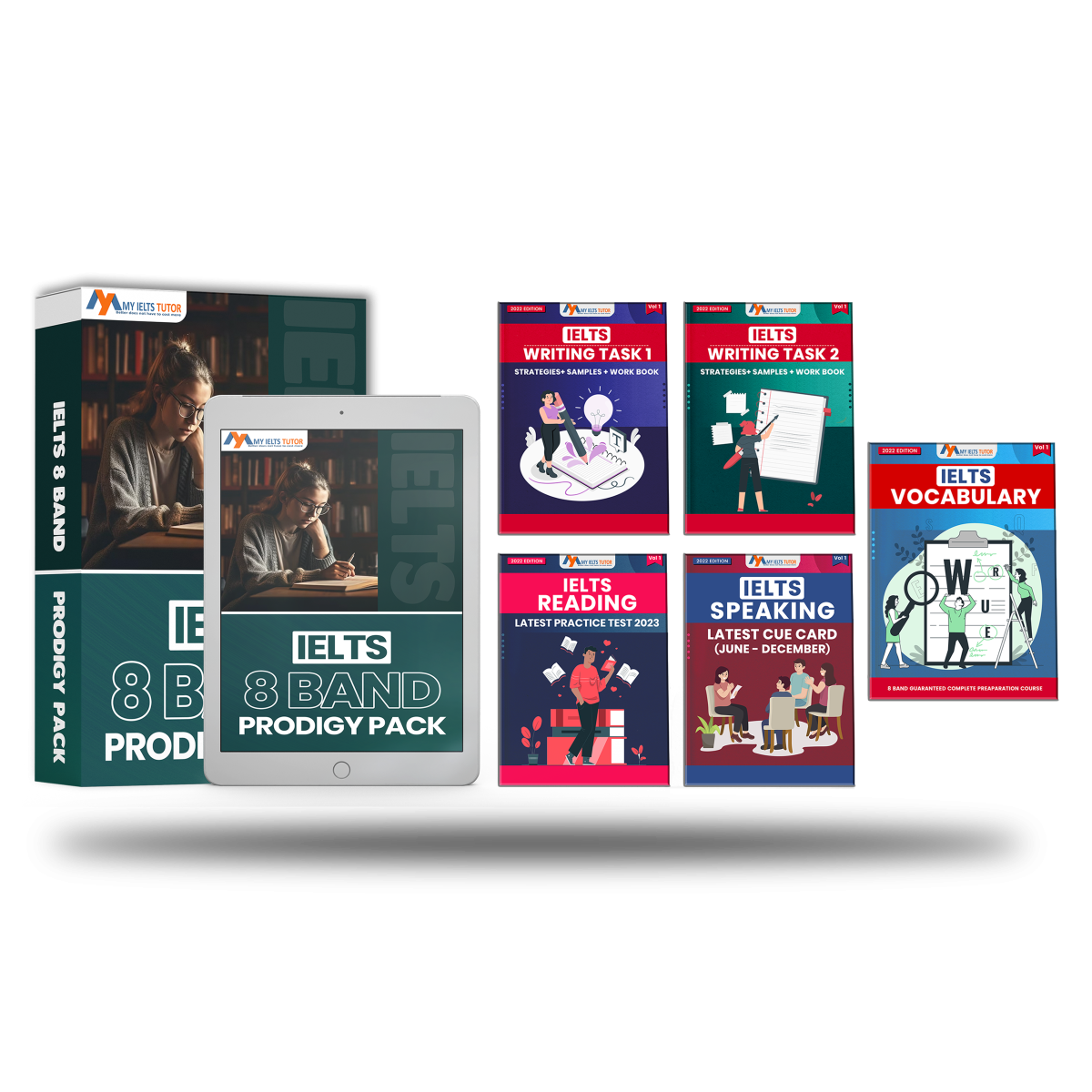 IELTS 8 Band Prodigy Pack – IELTS Complete Prep E-books (General Training)Original price was: $89.00.$29.00Current price is: $29.00.
IELTS 8 Band Prodigy Pack – IELTS Complete Prep E-books (General Training)Original price was: $89.00.$29.00Current price is: $29.00. -
Product on sale
 IELTS 8 Band Prodigy Pack – IELTS Complete Prep E-books (Academic)Original price was: $89.00.$29.00Current price is: $29.00.
IELTS 8 Band Prodigy Pack – IELTS Complete Prep E-books (Academic)Original price was: $89.00.$29.00Current price is: $29.00. -
Product on sale
 IELTS Preparation- General Training Combo (Comprehensive Course for 8777)Original price was: $99.00.$49.00Current price is: $49.00.
IELTS Preparation- General Training Combo (Comprehensive Course for 8777)Original price was: $99.00.$49.00Current price is: $49.00. -
Product on sale
 IELTS Material (Academic) – A Comprehensive 8 Band Material (All Modules In one)Original price was: $99.00.$49.00Current price is: $49.00.
IELTS Material (Academic) – A Comprehensive 8 Band Material (All Modules In one)Original price was: $99.00.$49.00Current price is: $49.00. -
Product on sale
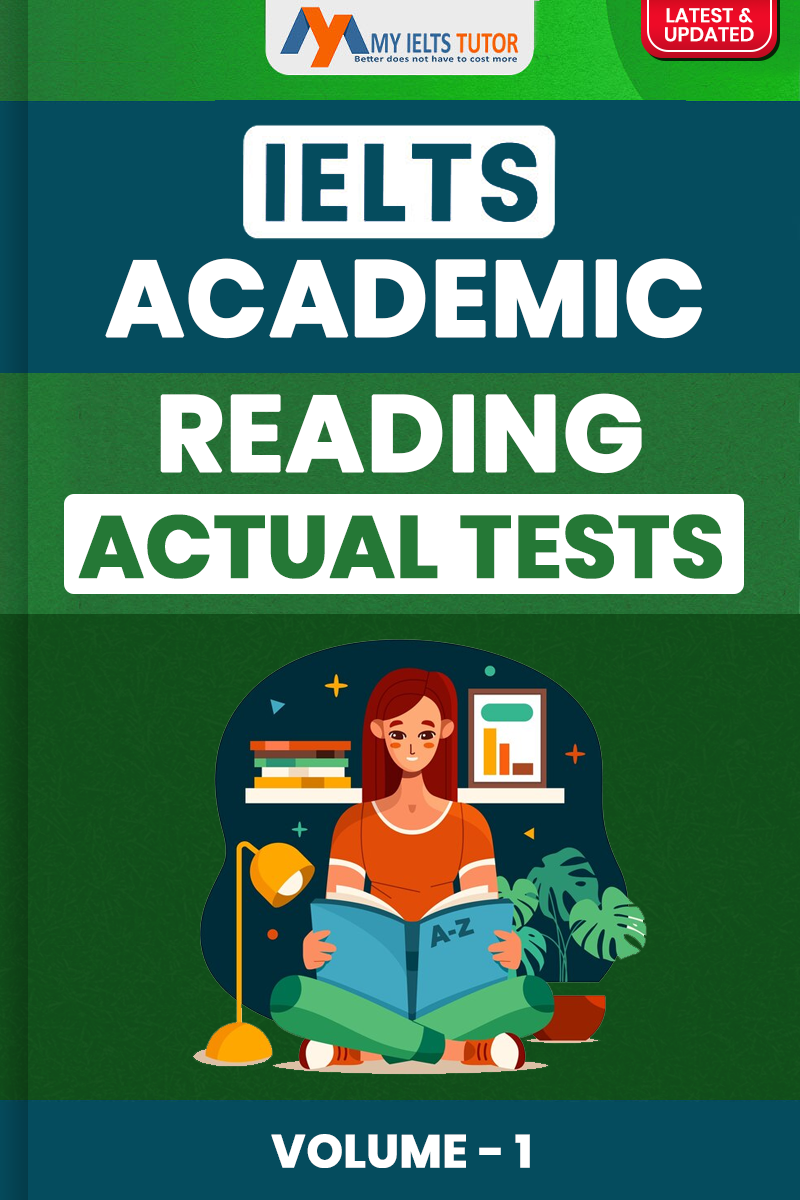 Best IELTS Academic Reading – Actual Reading Tests (Volume-1) 2025Original price was: $59.00.$19.00Current price is: $19.00.
Best IELTS Academic Reading – Actual Reading Tests (Volume-1) 2025Original price was: $59.00.$19.00Current price is: $19.00. -
Product on sale
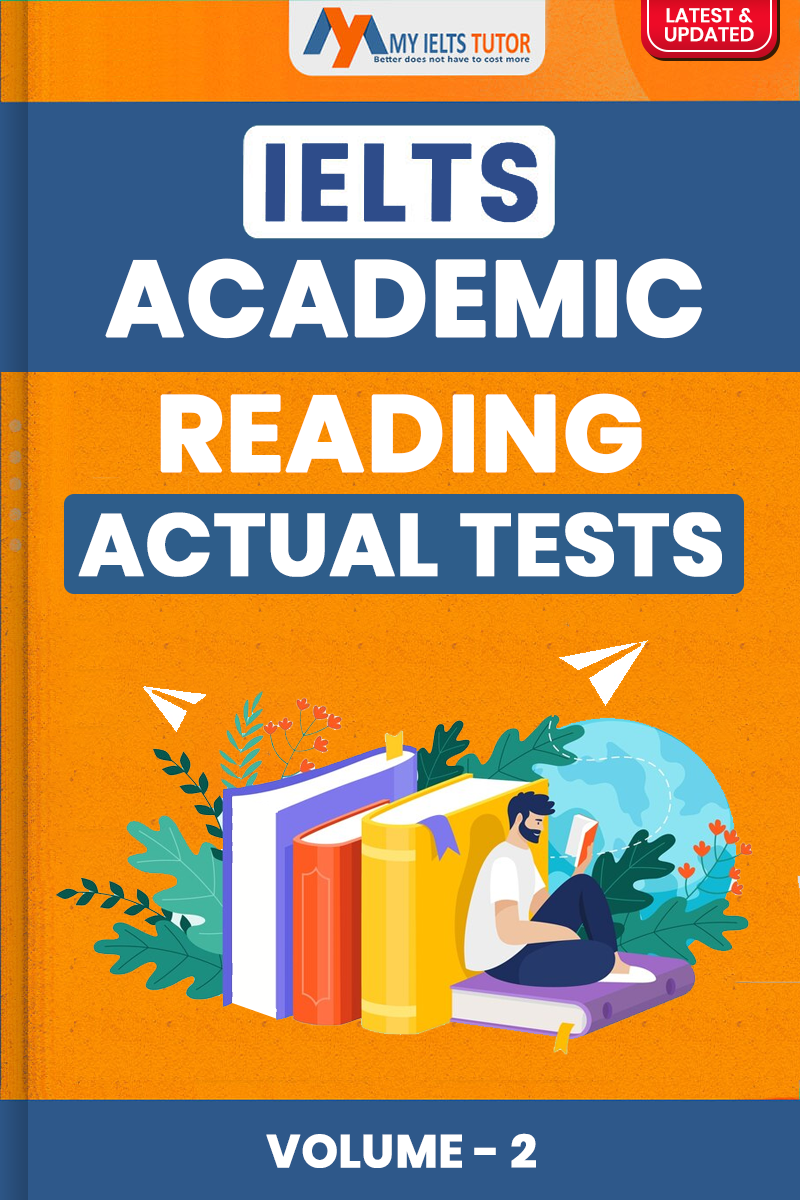 IELTS Academic Reading – Real Reading practice tests (Volume- 2) 2025Original price was: $59.00.$20.00Current price is: $20.00.
IELTS Academic Reading – Real Reading practice tests (Volume- 2) 2025Original price was: $59.00.$20.00Current price is: $20.00. -
Product on sale
 IELTS writing (Academic) -A complete 8 band writing guide (2025 Edition )Original price was: $59.00.$29.00Current price is: $29.00.
IELTS writing (Academic) -A complete 8 band writing guide (2025 Edition )Original price was: $59.00.$29.00Current price is: $29.00. -
Product on sale
 IELTS Academic Reading E-book – A Book With Actual Reading Tests- 2024 EditionOriginal price was: $69.00.$35.00Current price is: $35.00.
IELTS Academic Reading E-book – A Book With Actual Reading Tests- 2024 EditionOriginal price was: $69.00.$35.00Current price is: $35.00. -
Product on sale
 IELTS Writing (General Training) -A complete 8 band writing guide (2025 Edition )Original price was: $59.00.$29.00Current price is: $29.00.
IELTS Writing (General Training) -A complete 8 band writing guide (2025 Edition )Original price was: $59.00.$29.00Current price is: $29.00.
IELTS Writing Task – Test 1
Recent IELTS writing task 1 (actual test)
You should spend about 20 minutes on this task
The graph below shows the number of enquiries received by the Tourist Information Office in one city over a six-month period in 2011.
Write at least 150 words.
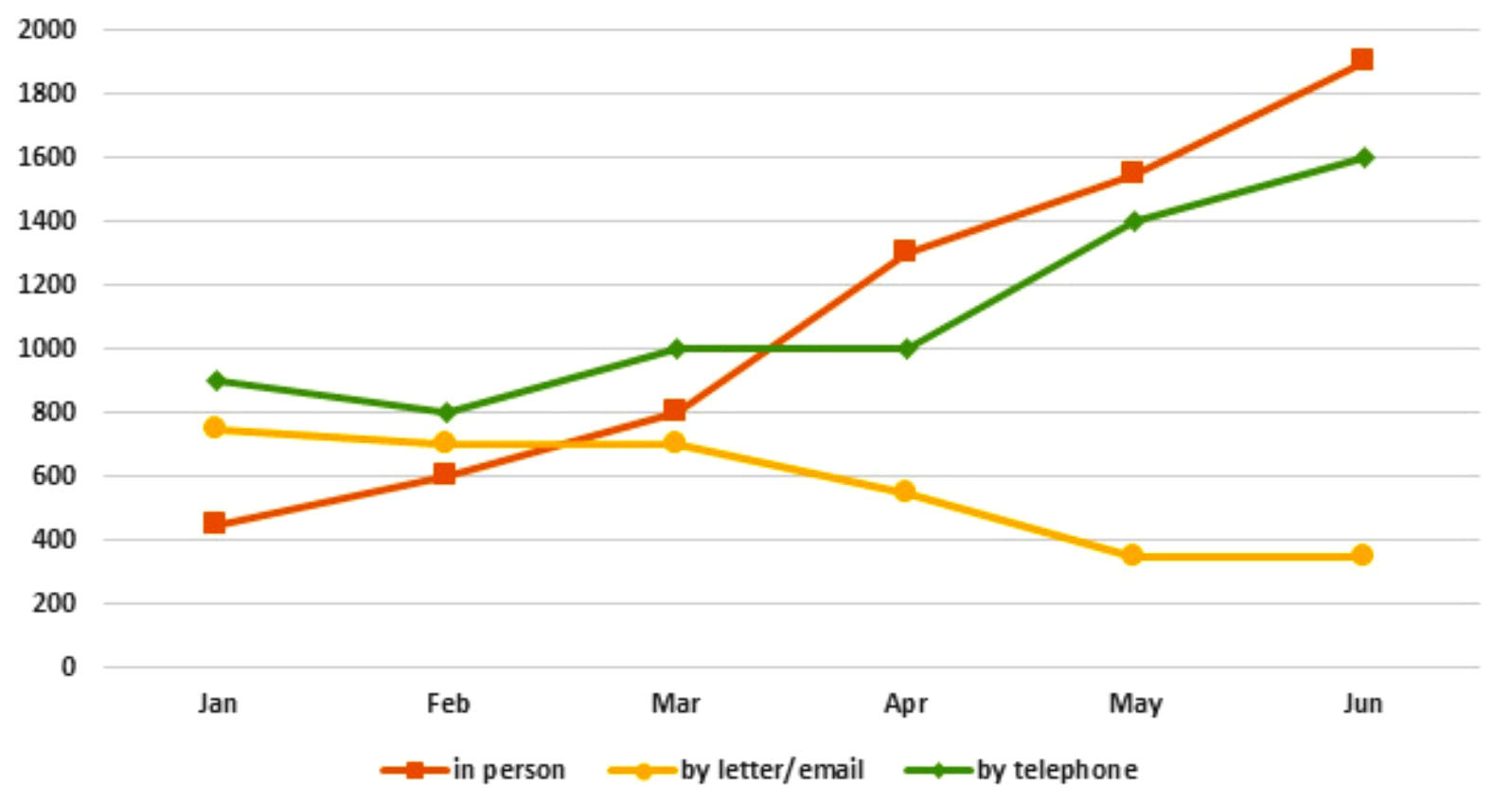
Sample Answer
The line chart illustrates the number of inquiries sent to the Tourist Information Office in a particular city via three means of communication, between January and June in 2011.
Overall, there is a contrasting trend in the queries made using different modes of communication, where doubts by mail have reduced over the period of time. While, queries made through telephone and in person witness a rising trend. It is clearly seen that in person queries have risen dramatically comparatively to others.
In January, the Tourist Information Office received 900 phone calls and just under 800 letters and emails. With just over 400 queries, not many tourists chose to ask for information in person. The telephone remained the most popular method of inquiry for the next three months, with approximately 1000 queries.
Meanwhile, the number of in-person inquiries increased significantly to 800, surpassing the figures for email messages and postal inquiries. From March to June, the most popular method of inquiry was in person. By June, the number of in-person inquiries had increased by over 1,000, peaking at 1,900. During this time, the number of phone inquiries increased significantly, from 1000 to 1600. In May and June, however, fewer people sent emails or letters to inquire, with slightly less than 400 inquiries.
Must read –
Recent Writing task 2 – Test 1
You should spend about 40 minutes on this task
Write about the following topic:
Some people think that it is more beneficial to take part in sports which are played in teams, like football, while other people think that taking part in individual sports, like tennis or swimming, is better. Discuss both views and give your own opinion.
Give reasons for your answer and include any relevant examples from your own knowledge or experience.
Write at least 250 words.
19 july, 2022
Sample Answer
Some people argue that playing team sports like football provides people with more benefits as opposed to participating in individual sports such as tennis or swimming. Personally, I believe that both types of sports can provide a range of benefits to people but, by participating in team sports one can learn useful skills which is only possible with group activities.
On the one hand, team sports such as football and basketball offer a variety of advantages to those who participate. Team sports, for example, provide players with the opportunity to develop interpersonal skills such as teamwork and communication skills, which will benefit them not only in their daily social interactions but also in their workplace. Furthermore, team sports allow players to develop a sense of unity, friendship, and sportsmanship among teammates, which can significantly improve people’s lives by making them feel a part of something.
On the other hand, Individual sports provide more opportunities for people to improve their personal skills, such as emotion management, stress management, and confidence and self-esteem building. Individuals who participate in an individual sport like swimming, usually have no one else to rely on for support during the game or match, so they must develop a strong mindset to deal with and overcome any setbacks they may face. Individual sports also give people more opportunities to push themselves by setting goals and achieving personal bests.
Overall, I feel that all group sports offer great benefits for people’s mental and physical health, and that people should choose playing team sports and must also involve in single games in order to achieve balance.
[carousel_slide id=’16536′]
6 Ways to boost your IELTS Listening Band Score from 6 to 8 Band
After having a brief of how the questions appear in the IELTS exam’s actual listening test and how they are classified in different parts, students must be aware of ways to tackle them. This module of the test includes the audio recordings played only once. You will not hear them twice; therefore, I will reveal a few secret tips to boost your scores of IELTS Listening and get a perfect band 9.
Time Management
During the listening exam, my students frequently comment that they don’t have enough time to look at the questions or write responses. In the listening exam, it is critical to use your time carefully. Because all students have the same amount of time, students who manage their time well will receive higher grades than students who do not. Take note of how much time is given to you in the instructions: “Now have some time to look at questions 20 to 24” OR “Now you have half a minute to check your answers. ”When it comes to time management, understanding questions quickly and knowing what to listen for is essential.
Be attentive
However, the IELTS Listening difficulty rises as the students proceed with questions, but the examiner also allows cracking answers using indicators and plugins. The examiner uses certain words like however, but, finally, that helps anticipate the speaker’s idea. Try to acquire a sense of what’s going on. You’ll get a short introduction before each part, which is essential to note. It appears for example: ‘Now, you’ll hear a chat between…’ or ‘Now, you’ll hear a lecture on…’ Be aware that this information is not mentioned on the question paper.
Please note who is speaking, why they are talking, and where they are located. Such parameters will make the rest of the tape much more accessible for students to comprehend.
Avoid Distractors
Being attentive and avoiding distractions works hand in hand because the examiner induces several types of distractors in the IELTS Listening Test. Distractors are most commonly seen in dialogues, where one speaker says something and the other speaker corrects him or her. In order words, you’ll hear two different versions of the identical piece of information. One is correct, and the other is erroneous, and if you don’t pay attention, it’s obvious to write the incorrect one. Another example of the examiner distracting students is by setting traps using similar keywords the wrong way in the audio. These distractors may cause you to make dumb errors on the test, so be prepared to deal with them on test day. Avoid them to improve your IELTS Listening scores.
Have Patience
The examiner plays the audio once; therefore, make sure to understand the idea, listen to the correct word in their singular or plural forms, have eyes peeled on questions, and most importantly, write the correct spellings. Doing all such tasks at once can make students impatient. They also tend to lose on listening to some part of the recording and hence miss on questions. You can also be on their part, so be patient whether you miss one question as there is a long way to go. You have the rest of the questions to respond precisely to boost your listening test bands.
Instructions
As mentioned earlier, Instructions are essential to answer the correct way. If you do not follow the examiner’s prescribed guidelines, your answer will not be given attention while marking.
Correct Spellings
Writing the answers to your IELTS listening module with correct spellings is as essential as getting them right. For instance, the speaker in the audio meant ‘principal’, but the answer is incorrect when you write ‘principle’. You heard the examiner right yet misinterpreted the meaning. Some most commonly repeated words appear in the IELTS exam; practice them to avoid errors such as incorrect spellings.
The students can point out these mistakes while practicing for the IELTS exam to improve listening scores. However, be aware of the types of questions appearing in the IELTS Listening section for a perfect band 9.
Wait a minute, Do you need 8+ bands in IELTS Listening?
If yes, How many questions must be correct?
IELTS Listening Band Calculator
must read – Mastering IELTS ListeningEach Question carries 1 mark Marks obtained Bands 39-40 9 37-38 8.5 35-36 8 32-34 7.5 30-31 7 26-29 6.5 23-25 6 18-22 5.5 16-17 5 13-15 4.5 11-12 4 Now that you know how many marks you require as per the band desirability. The following is the IELTS exam question list, and you may encounter some of them in your actual IELTS test. Jot down the ones you find easiest to score as per your overall IELTS band requirement.
Types of Questions appearing in the IELTS Listening test
Although there are only four parts to the listening test, the types of questions differ for every exam. The students may encounter some of the following mentioned questions in their real IELTS test.
- Form completion | Note completion | Summary completion
- IELTS Listening Sentence completion
- Table completion
- Flow-chart completion
- Matchings
- IELTS Listening Multiple choice questions ( MCQs )
- Map labelling | Diagram labelling
[carousel_slide id=’16536′]
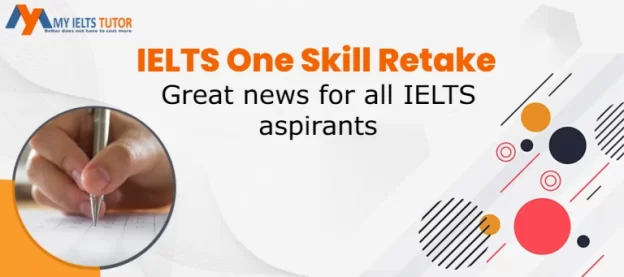
IELTS One Skill Retake
IELTS Test takers now have a chance to take their IELTS Score higher in single module
Great news for all IELTS aspirants! Test takers of the world’s most popular high-stakes language test, (IELTS), will soon have access to a new feature to help them boost the score they need to achieve their global learning and career goals.
On 28 october, 2022, The IELTS One Skill Retake test will be introduced by IDP, according to a recent announcement. If a student does not get the score they were hoping for on the first try, they will have the option to retake only one of the four skills (Listening, Reading, Writing, or Speaking) on the IELTS exam. There are still a lot of unknown concerns at this point, but it is clear that the implementation of the IELTS One Skill Retake might have a significant influence on how long it takes test-takers to get their goal scores. For instance,
- Will you be able to take the IELTS One Skill Retake once, or many times?
- What would be the cost of One skill retake?
- And will all professional bodies and governments accept the IELTS One Skill Retake certificate?
What questions do we have about the IELTS One Skill Retake?
This initial communication regarding the IELTS One Skill retake obviously raises more questions than it does answers. What is certain, though, is that IELTS has listened to test-takers and recognises the necessity of introducing the option for students to repeat just one portion of the exam rather than being required to do so.
This is crucial for children whose grades vary across modules. For instance, they could discover that their Speaking score fluctuates between a 6.5 and a 7.0, while their Writing score remains constant at a 6.5. Nothing is more upsetting for students in this situation than working so hard to get a 7.0 in writing only to get a 6.5 in speaking. Students can now “hold” their Writing score of 7.0 and merely take Speaking again. Isn’t it great. However, there are still a number of points that remain unclear:
- The initial communication said that the plan will launch in the major cities of Australia. It is unclear, however, if this is merely a prototype programme (i.e., one that is being evaluated before being implemented globally) or if they are only the first centres to provide the IELTS One Skill Retake and others across the globe will soon follow.
- There is also no mention of the test’s fee or how many times a student may take the IELTS One Skill Retake. Will it be possible to retake the test, or is this just a one-time opportunity following the completion of a comprehensive test?
- There is no word on whether the second form will be recognised by institutions other than the Australian Department of Home Affairs. Will you be able to use the IELTS One Skill Retake to seek Canadian residency? My expectation is that each of these organisations will have its own policy, so we’ll have to wait and see what happens.
Warwick Freeland, Managing Director – IELTS, IDP Education, said One Skill Retake has been introduced after listening to test taker feedback.
“With the right preparation and support, we know our test takers achieve their best score the first time around,” Mr Freeland said.
“However, we listened to our test takers and they told us they wanted the opportunity to retake one section of the test if they didn’t get the score they were aspiring for on test day,” he said.
“With One Skill Retake, test takers can get their study, migration or work applications plans back on track,” he said.”
Read also – IELTS Exam Day: A Survival Guide
[carousel_slide id=’16536′]
